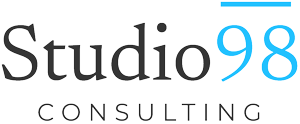After the pandemic, organizations worldwide have recognized the need to become more agile and radically human. While the process involves adopting a fast, flexible, and highly responsive framework, it can only work if you incorporate vital characteristics.
To establish an agile workflow, it’s important to keep in mind that it’s an ongoing journey. To ensure your organization embraces agility, make sure to consider the following questions:
1. What Does It Mean to Be Agile?
Being agile means continuously improving your business processes by adapting quickly to changing circumstances. This involves prioritizing customer needs and giving employees autonomy by creating an environment that encourages experimentation, collaboration, and learning from failures.
When you foster a culture of inclusivity and empathy in your organization, people will feel valued and empowered to contribute their unique skills and perspectives.
2. How Do You Integrate Your Products?
One of the hallmarks of an agile organization is excellent product integration. Agile teams strive for regular, iterative releases of their products, incorporating customer feedback and making adjustments as necessary. By adopting a continuous integration and delivery approach, you can shorten feedback loops, reduce time-to-market, and deliver value to customers more frequently. This practice will also promote collaboration and cross-functional teamwork within the organization.
3. Are Your Leaders Curious and Open-Minded?
Your leaders are the ones who drive organizational agility, so they must seek diverse perspectives and challenge the status quo. Creating an environment encouraging experimentation and learning allows teams to innovate and adapt. If your organization doesn’t improve psychological safety and trust, you cannot expect the teams to take risks, explore new ideas, and drive continuous improvement.
4. How Does Your Organization Handle Change?
Change is an inevitable part of agility, so you need to understand how change affects individuals personally in your organization. To succeed in today’s dynamic and fast-paced environment, you must consider change’s emotional and psychological impact. This lets you make faster decisions and improve customer experience in real time. If your organization struggles with change management, it may hinder your agility and ability to respond quickly to market shifts.
5. Do You Encourage Cross-Functional Collaboration?
Your organization needs to promote collaboration across different departments and disciplines. Breaking down silos and encouraging cross-functional teams allows for better communication, knowledge sharing, and a broader understanding of the business. By creating small, cross-functional teams, your organization can quickly solve complex problems and deliver more value to customers.
6. Are Your Processes Balanced and Flexible?
Agile businesses use lightweight frameworks like Scrum or Kanban as they allow your processes to be flexible, transparent, and accessible. An overemphasis on rigid procedures and policies can impede the overall agile culture. Your organization’s main goal should be to help teams to communicate their objectives, collaborate on shared goals, and be responsive to changes in the market. Therefore, you should balance process-oriented structures and embrace the human aspect of work.
Building an agile organization requires a mindset, culture, and practice shift. By evaluating your organization against these questions, you can identify areas for improvement and take steps to incorporate an agile workflow. If you’re looking to build an agile workflow, contact Studio98. With our customized organizational consulting solutions, we can help you create an agile workflow. Contact us today to learn more!

